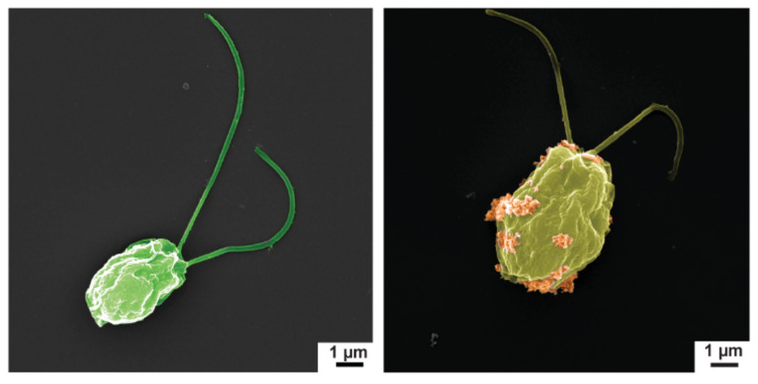Enhanced Flexible Mold Lifetime for Roll‐to‐Roll Scaled‐Up Manufacturing of Adhesive Complex Microstructures
Bioinspired Microstructured Adhesives with Facile and Fast Switchability for Part Manipulation in Dry and Wet Conditions
Smart Materials for manipulation and actuation of small-scale structures
3D nanofabrication of various materials for advanced multifunctional microrobots
Liquid Crystal Mesophase of Supercooled Liquid Gallium And Eutectic Gallium–Indium
Machine Learning-Based Pull-off and Shear Optimal Adhesive Microstructures
Information entropy to detect order in self-organizing systems
Individual and collective manipulation of multifunctional bimodal droplets in three dimensions
Microrobot collectives with reconfigurable morphologies and functions
Self-organization in heterogeneous and non-reciprocal regime
Biomimetic Emulsion Systems
Giant Unilamellar Vesicles for Designing Cell-like Microrobots
Bioinspired self-assembled colloidal collectives drifting in three dimensions underwater
Microalgae-powered biohybrid microswimmers

Biohybrid microswimmers exploit the swimming and navigation of a motile microorganism to target and deliver cargo molecules in a wide range of biomedical applications. Microalga-powered biohybrid microswimmers offer great potential compared to other motile microorganisms, considering their full biocompatibility, superior motility and phototactic abilities. Therefore, we have developed high-throughput methods to prepare microalga-powered biohybrid microswimmers that carry complex and functional cargoes, and we aim to target and localize them for various medical applications.
First, we designed and manufactured a biocompatible biohybrid microswimmer powered by a unicellular freshwater green microalga, Chlamydomonas reinhardti (C. reinhardtii) and polyelectrolyte-functionalized magnetic spherical cargoes []. We also showed their biocompatibility and external magnetic steering. Next, we investigated puller and pusher-type of microswimmers, where we showed that in a co-culture of C. reinhardtii algae with Escherichia coli (E. coli) bacteria [
], we observed noticeable fluidic coupling deviations from the existing understanding of passive colloids mixed with bacterial suspensions previously studied in the literature.
We also developed magnetotactic algal microswimmers, by magnetizing microalgal cells with terbium []. The magnetized algae were able to align to the field lines of an applied uniform magnetic field, guiding them to swim in a directional motion. Considering their non-cytotoxic nature and autofluorescence, magnetized microalgal biohybrids are promising candidates for magnetically steerable biohybrid microrobots. In a recent work, we reported a new biohybrid design strategy, where we non-covalently assembled a thin and soft uniform coating layer around C. reinhardtii [
]. We used polymer-nanoparticle matrix as the synthetic component, reaching a manufacturing efficiency of approximately 90%. Furthermore, by conjugating the nanoparticles embedded in the thin coating with chemotherapeutic doxorubicin by a photocleavable linker, we reported on-demand delivery of drugs to tumor cells as a proof-of-concept biomedical demonstration.
Members
Publications




